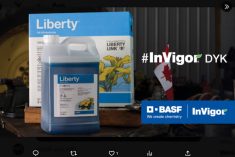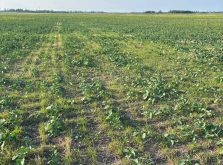A big part of getting high quality peas and lentils in the bin is using a “true” desiccant that gives you a fast, even dry down.
How I define a “true” desiccant? Simple. A true desiccant is not systemic and works by actively bursting the live cell of the plant on contact, thus releasing moisture.
Other products, like glyphosate, move systemically through the plant. This takes far longer for dry down and could lead you to lose out on quality by having those plants exposed to poor weather or excess moisture late in the season.
Read Also

Claas brings 1000 Series SP forage harvesters to Canada
In mid-August, Claas unveiled its new line of Jaguar forage harvesters at an event in Visalia, California, deep in the heart of that state’s dairy region.
Another huge advantage to using a true desiccant over glyphosate is that it doesn’t affect the germination and vigor of your seed, since it’s not moving through the plant. Glyphosate is going to affect your seed’s germination and prevent you from putting that seed back in the ground.
As for desiccant timing in lentils or field peas, you’ll want to go in when there’s about 30 per cent moisture left in the plant.
The bottom pods should appear brown and dry but not split and the seeds rattling in the pods. The middle pods will be light green to yellow and have full-size seeds that are splitting but not juicy. Finally, the upper pods will be a fleshy green, though the seeds may be immature.
This agronomy tip is brought to you by Carolyn Ruzicka, agronomic service representative, South-Central Saskatchewan, with Syngenta Canada















